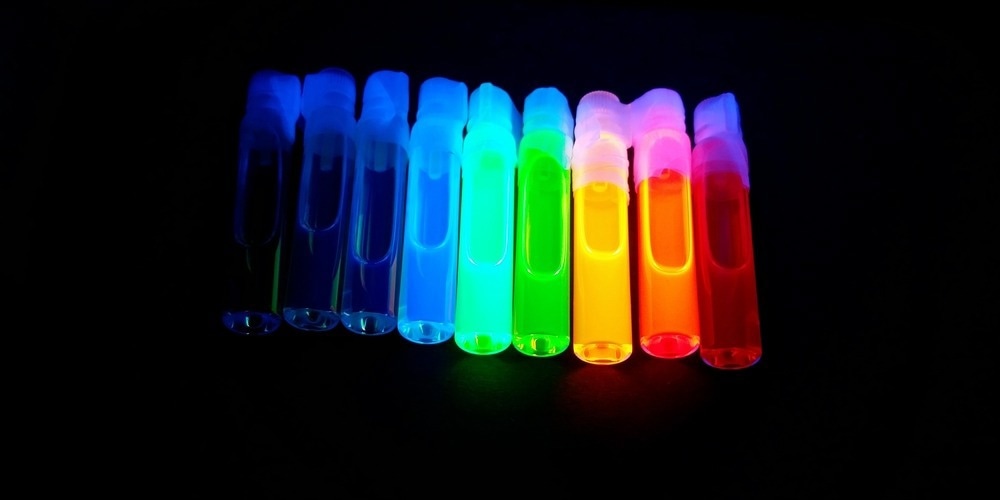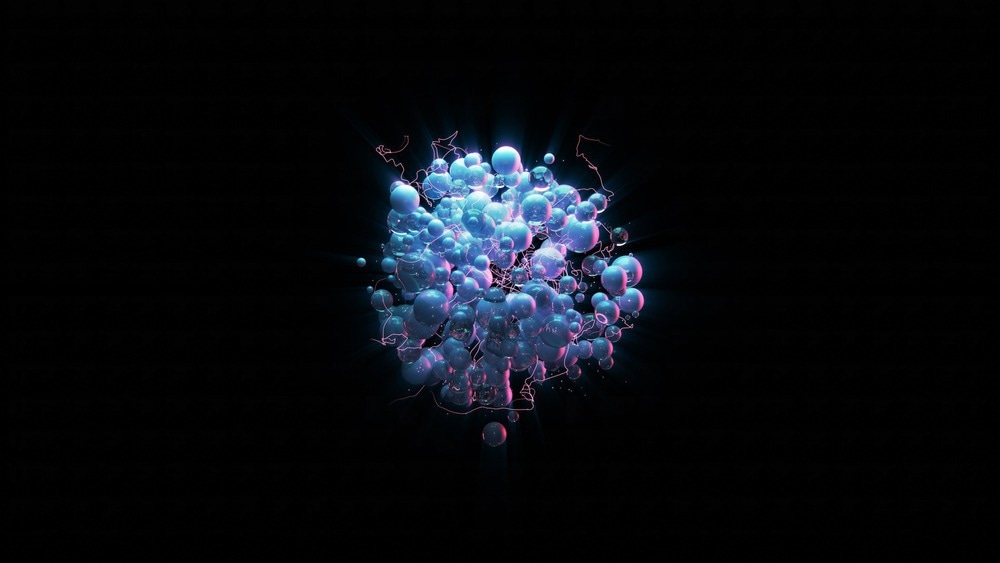A new fabrication method for quantum dots could lead to more effective and efficient quantum dot displays, especially due to improvements in the generation of blue-colored quantum dots. The process has been called a “bottom-up, self-organizing chemistry” by its designer, Dr. Eiichi Nakamura of Tokyo University.

Image Credit: Leo Matyushkin/Shutterstock.com
Quantum Dot Display Technology
Quantum dots are crystals at the nanoscale which can emit light in different colors. They are currently being exploited for next-generation display applications, with devices using quantum dot technology promising better power efficiency, higher brightness, and purer colors than display technology currently in circulation.
Pixels, the small squares of practically any color that combine to make digital displays and prints everywhere from smartphone screens to billboard advertisements, are not in fact the smallest color particles in digital displays. There are also three subpixels: red, green, and blue. Pixels get their colors from varying intensities of their red, green, and blue subpixels.
Subpixel technology has evolved from the early years of color television, and there are now a number of means for producing pixelated images and displays. The next generation of screen technology employs quantum dot LEDs, or QD-LEDs to further advance efficiency and performance.
QD-LEDs can emit 40,000 nits and are up to 100 times brighter than traditional CRT or LCD displays. They can be dispersed in aqueous and non-aqueous solvents, which makes them suitable for printing and application in flexible displays. They can be used in all sizes, including large-area televisions.
At present, most QD-LED displays contain organic materials that limit their functional lifetime. However, inorganic QDs offer the potential to improve QD-LED lifetimes even compared to OLED technology.
QD-based display technology is theoretically beneficial in terms of performance, power consumption and efficiency, contrast ratio, lifetime, and response time. Printing can be carried out with pulsed spray coating, aerosol jet printing, and super inkjet printing. Perovskite QDs exhibit white light in LEDs with ultra-high luminosity and a long period of operation.
Improving Blue QDs for QD Display
QD-LED display technology is still maturing, although some displays are already on the market. The current options tend to perform poorly in regard to blue subpixel generation, however. Blue is the most important base color out of the three, as displays use blue light to generate green and red light through the down-conversion process. As a result, blue QDs tend to be complicated and expensive to fabricate, and the quality of blue QDs is a critical factor in the overall performance of a QD-LED display.
Now, a team of researchers led by University of Tokyo chemist Dr. Eiichi Nakamura has proposed a solution to improving blue QD quality for QD displays. The method, based on self-organizing chemical structures, was recently presented in an article in the Journal of the American Chemical Society.
In the past, blue QD designs had been mostly “top-down”, taking relatively large quantities of a chemical substance and refining them through a series of processes until QDs emerged. Instead, the new technique is bottom-up. Using self-organizing chemistry principles, the team controlled molecules precisely to make them form the desired QD structures.

Image Credit: BokehStore/Shutterstock.com
When the blue QD that the researchers produced with this method was exposed to ultraviolet light, it produced a nearly perfect blue light. The light was measured by the BT2020 international standard for measuring colors’ accuracy.
The near-perfect blue was achieved due to the QD’s unique chemical composition. This was a mixture of organic and inorganic compounds including oleylamine, malic acid, and lead perovskite. These compounds could only form QDs through chemical self-organization, where they are assembled into a cube of 64 lead atoms (with four atoms on each side of the cube). The structurally uniform QD had eight malate molecules on its eight corners, with oleyl ammonium cations stabilizing the edges and faces of the cube.
Discovering that malic acid was a necessary component for the chemistry to work proved to be a major challenge for the research team, who spent over a year methodically experimenting with different materials until they found it.
Determining the blue QD’s structure also proved to be challenging. It is 190 times smaller than the wavelength of blue light at just 2.4 nm across, which means that conventional imaging means would not be able to capture it. The team instead used a tool called SMART-EM, or “cinematic chemistry.”
Cinematic chemistry is an advanced form of electron microscopy for capturing nanoscale details in three spatial dimensions plus the temporal dimension. It can capture interactions with millisecond and angstrom resolution. This was essential, as the blue QD was a dynamic, relatively short-lived event/object.
Now, the team is working to improve the stability of the blue QD they developed, alongside partners from industry. The industry partnership will undoubtedly hasten the self-assembling blue QDs toward mass-market commercialization, and this technology may be a feature of consumer electronics in the near future.
More from AZoOptics: The Future of Laser Steering in Self-Driving Cars
References and Further Reading
Chevalier, O., et al (2022). Precision Synthesis and Atomistic Analysis of Deep-Blue Cubic Quantum Dots Made via Self-Organization. Journal of the American Chemical Society. doi.org/10.1021/jacs.2c08227.
Huang, Y-M., et al (2020). Advances in Quantum-Dot-Based Displays. Nanomaterials. doi.org/10.3390/nano10071327.
Tokyo's new blue quantum dots promise more energy-efficient displays. (2022) [Online] Optics.org. Available at: https://optics.org/news/13/11/17 (Accessed November 2022).
Disclaimer: The views expressed here are those of the author expressed in their private capacity and do not necessarily represent the views of AZoM.com Limited T/A AZoNetwork the owner and operator of this website. This disclaimer forms part of the Terms and conditions of use of this website.